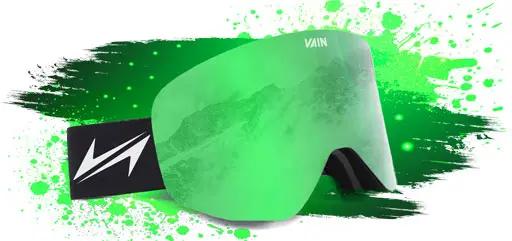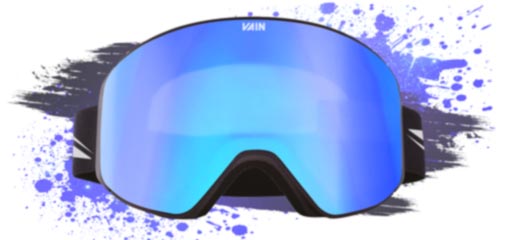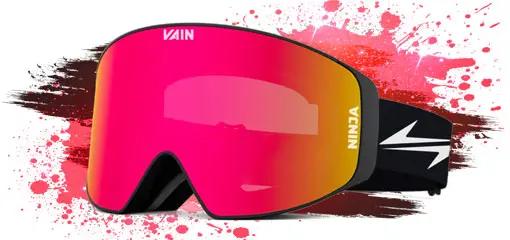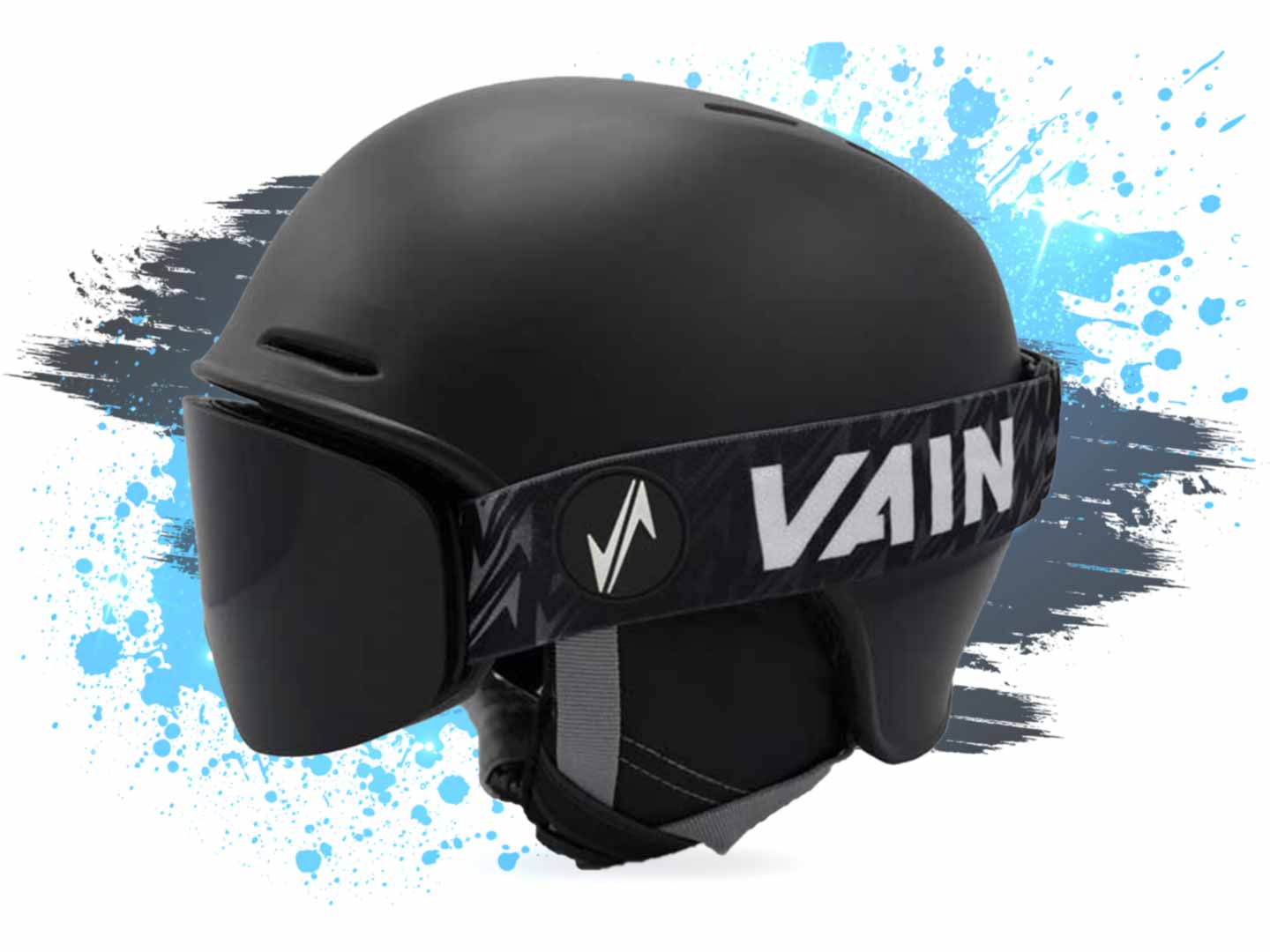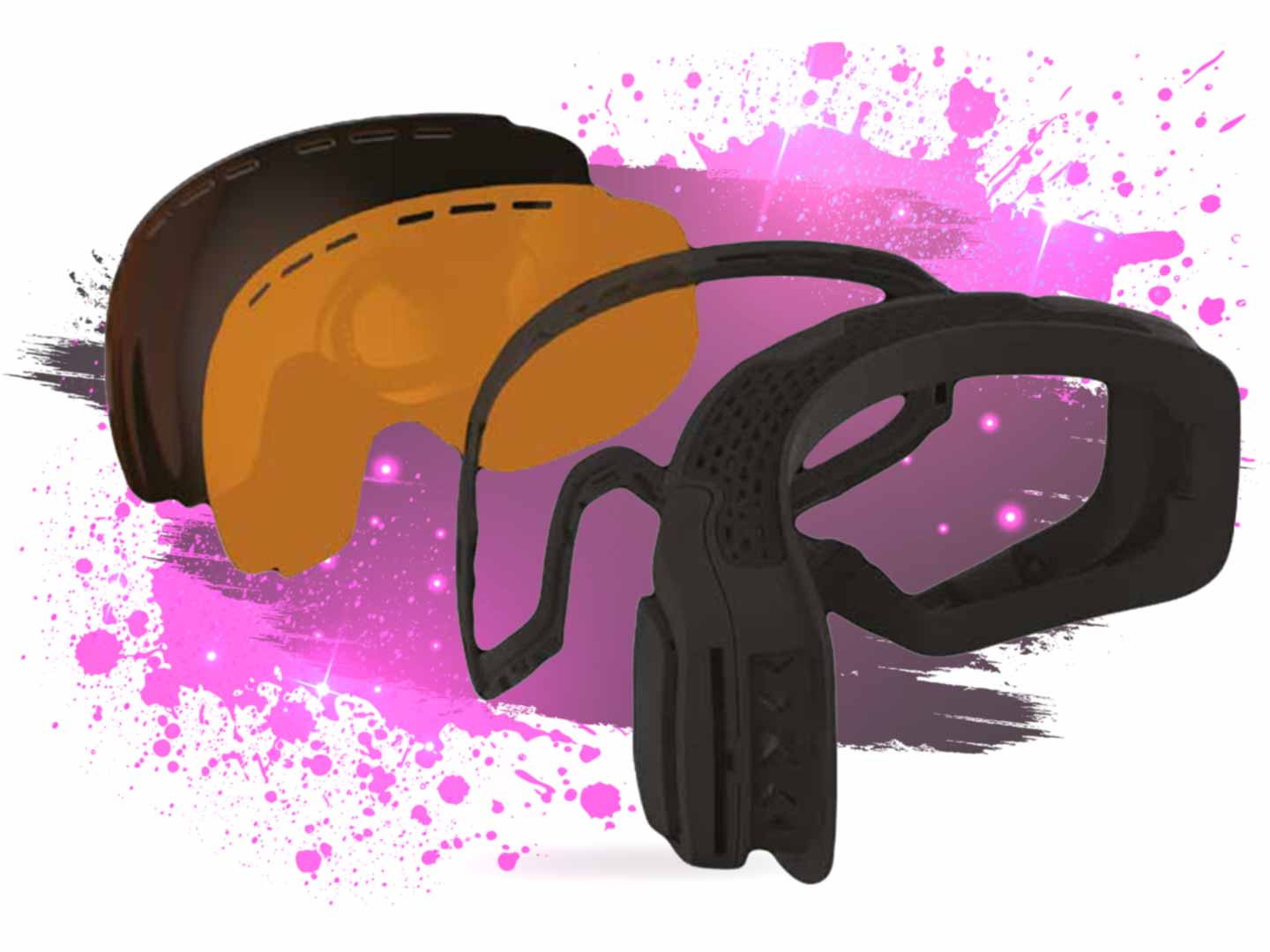How to buy ski & snowboard goggles: fit and size guide
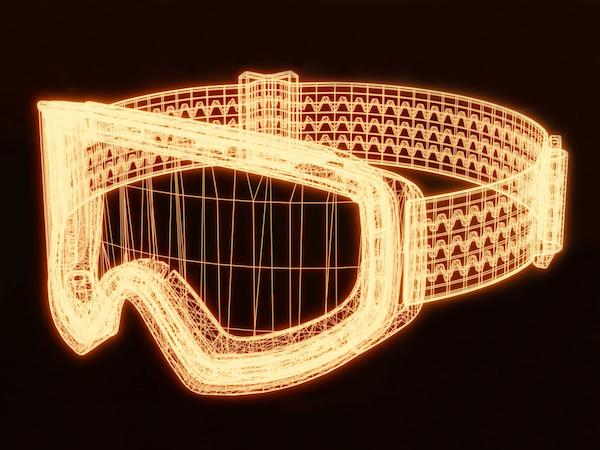
When skiers and snowboarders start searching for a nice looking and fitting pair of ski goggles you will most likely end up with the decision between hundreds of variants. But what are the most important aspects of the ski goggles and how can we find them. This blog will tell you everything there is to know about your ski goggle decision.
Ski Goggle decision criteria:
- Helmet compatibility
- Goggle fit
- Lens technology
- Interchangeable lenses
- Moisture & Fog
- Colors & Design
- Over the glasses compatible
- Quality goggles
- Polarization?
Is your ski goggle compatible with your helmet?
The most important aspect for your goggle decision is that it will fit with your helmet. If it won't fit, it will be useless, so let's dig into the details.
Look at the smooth curve of your helmet where your goggles will rest upon. This curve should be mostly identical to the goggle curve for a good fit. The example below is a Large helmet (58-61 cm) with our one-size-fits-all ski goggle.

These two markets have been working with each other for a good amount of time and you will notice that most ski goggle and helmet combinations will fit properly. But that doesn't mean every size will fit, because a fitting size helmet is important and not everyone has the same size.
The most important option is the adjustable ski goggle strap. This ensures that the strap can go over the helmet. Most ski goggles are equipped with an adjustable goggle strap. The best goggle straps come with an anti-slip slicone layer, so it won't slip off your helmet.
Regular fitted ski goggles will most likely fit with the sizes medium and higher. But for small helmets and kids helmets, they do not always fit. To know if those will fit you'll either have to try them or measure the sizes of the helmet and goggle.
Besides a regular fit you will find oversized goggle fit that are slightly bigger and will fit with large and bigger sized helmets. And a one-size-fits-all which is designed to have a comfortable fit with any helmet size from small and bigger.
The global measures of a ski goggle and helmet fit:
- One size fits all -> Helmet Small and up
- Regular fitted goggles -> Helmet Medium and up
- Oversized fitted goggles -> Helmet Large and up
Want to read more about ski goggle and helmet compatibility? Go on and read our dedicated post about how to fit ski goggles and helmet together.
How to determine ski goggle size and fit?
Second up is the ski goggle fit, every face is different and determining if it will fit can be difficult. Luckily there are two aspects that determine 95% of the fit.

The first aspect is the ski goggle frame flexibility, where a flexible frame will form nicely along any face shape. More stiff frame size will be deforming less and therefore fit to less face shapes than the flexible one.
The second aspect is the applied foam backing. The foam has all kinds of purposes like ventilation, sweat and moisture, but the most important one is that it will provide a full perimeter fit to your face.

But which foam will fit better? Foam that consists out of multiple layers have multi purpose effects and will most likely provide the best overall quality. But the fit is determined by its firmness, not too firm and not to soft. It's a factor of what you prefer as it has to feel right.
Bonus tip:
Often the foam might feel cheap or lacking quality, but on the contrary it might be a higher quality than you think. A foam that is porous will make it look and feel cheap but provides the best benefits for it's function!
Which lens CE category do I need?
Next up are the goggle lens categories for ski goggles. Lens categories are marked with CE and a following number between 0-4. The mark indicates the amount of visible light that can come through the goggle lens (VLT = visual light transmission).
The table below shows the CE categories S0, S1, S2, S3, S4 and their applicable weathers.
|
CE Category |
Tint |
VLT % |
Best applied weather conditions |
|
CE Category 0 / S0 |
None |
80 – 100% |
Clear lens good for midnight & snowy days weather |
|
CE Category 1 / S1 |
Light |
43 – 80% |
Light tint lens for misty, foggy, snowy & dull overcast days |
|
CE Category 2 / S2 |
Medium |
18 – 43 % |
Good all round lens tint for majority of weather types |
|
CE Category 3 / S3 |
Dark |
8 – 18% |
Dark lens for sunny days and sensitive eyes |
|
CE Category 4 / S4 |
Very Dark |
3 – 8% |
Very dark lens for intense bright light conditions |
The CE mark can tell you for which weather the lens is most relevant, but there's more to lenses. The lens consists out of a base lens with multiple coatings that provide UV400 protection, polarization and so on. The color of the base lens and coatings like REVO technology can increase or decrease contrast. REVO coatings can also achieve great mirrored lenses.
If we put the CE categories to work in a visual example it will liik like this:

Do I need interchangeable snowboard goggle lenses?
There are ski goggles with lenses that will do in every weather circumstance. But those are definitely not ideal as the lenses have a range they work best inside and are never optimal for every weather. A set of 2 interchangeable lenses would do the same job a lot better and changing lenses is done in no-time. There are multiple lenses available for any kind of weather circumstance so pick whatever you like!
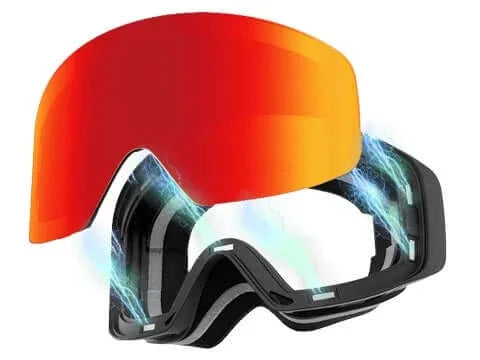
The best option for exchangeable lenses are the magnetic exchangeable lenses. These are easy to handle and you can change your lens in no-time. Another benefit is that they don't wear and break easily as the magnets will do the work. If you are looking for magnetic goggles, make sure to hit the button below!
How do you keep moisture and fog out?
There is nothing more annoying than a lens that constantly fogs up, but how can we prevent it from happening? There are a ton of ways to reduce the fog, but the biggest factor is te goggle design itself. The biggest factor is the anti-fog coating applied. This reduces the ability for fog to attach to the lens. Most preferably they have a full perimeter ventilation and prevent snow from entering the ski goggle. Besides that the foam plays a role in the fog that has to go out!
The best option would be to have an anti fogging coating lens with full perimeter ventilation to keep moisture away.

If you'd like to know more about keeping your goggles from fogging up. Make sure to check out our 19 Tips to keep ski goggles from fogging up blog.
Which colors and design should I choose?
This one is up to whatever you like, after all it's you that has to like it. I wouldn't be worrying a lot about how others might like it, but go with what feels right.
The current trends are rimless goggles with high reflective colored lenses like our Slopester collection.

Over the glasses compatible ski goggles?
Look for the OTG ski and snowboard goggles or over the glasses compatible designs. The example below is our flexible Slopester frame with recesses to fit over the glasses. It is never the most optimal way of using otg ski goggles together with glasses, but it's the best we can provide. For the best comfort contact lenses would be advisable.

If you'd like to know more about Over The Glasses OTG goggles. Make sure to read our dedicated OTG ski goggle guide.
Quality above all.
Quality goggles should be priority, because is spending the skiing trip with terrible ski and snorboard goggles worth the 20 extra bucks? No it's not. Going on a skiing trip usually costs quite a bit and saving the small amount to ruin your trip would be a disaster.

Recommended ski and snowboard goggles for beginners
For quality ski or snowboard goggles the price usually starts at about 80 or 90 bucks. But you there are way more expensive and excluisive models on the market. We can recommend our Slopester goggles for beginners. The Slopester goggles are low priced and have the best technology available.

Recommended goggles for advanced winter sports
If you are looking for some more advanced ski goggles, we can recommend our Carver model. The Carver ski goggle has more magnets for a stronger hold and is overall sturdier than the Slopester model.

Recommended ski goggle all-in package
Want to go all-in on your skiing trip? Then we recommend our ninja goggle. This goggle has all the benefits of the Carver model and a magnetic attachable face mask. It also features better fitting foam padding for more comfort. This model is the complete deck you will need for an amazing winter!
Do you need polarized ski goggle lenses?
The short answer is no. Polarization reduces glare and blinding light, do you need it? Yes preferably, why are polarized lenses unnecessary then? Because most of the coatings that are already applied on ski goggles will give a 99% polarizing effect. You would be spending extra money for a negligible effect.

So which coatings will give the polarizing effect? There are a lot of coatings that give the polarizing effect but the most used one is the REVO coating. The coating was designed by NASA for aerospace rockets to reflect the intense sunlight in space, a polarizing effect was necessary. The REVO coating is used to create the bright colored reflective lenses that popular brands use. So if you see a REVO coating lens, the polarized layer is not necessary!
0 comments

